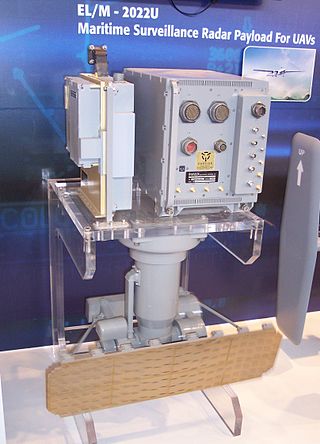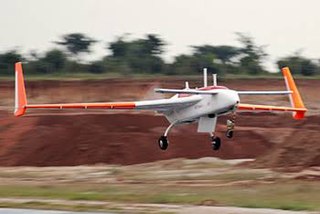Related Research Articles
Digital signal processing (DSP) is the use of digital processing, such as by computers or more specialized digital signal processors, to perform a wide variety of signal processing operations. The digital signals processed in this manner are a sequence of numbers that represent samples of a continuous variable in a domain such as time, space, or frequency. In digital electronics, a digital signal is represented as a pulse train, which is typically generated by the switching of a transistor.
The National Severe Storms Laboratory (NSSL) is a National Oceanic and Atmospheric Administration (NOAA) weather research laboratory under the Office of Oceanic and Atmospheric Research. It is one of seven NOAA Research Laboratories (RLs).

IGOR Pro is a scientific data analysis software, numerical computing environment and programming language that runs on Windows or Mac operating systems. It is developed by WaveMetrics Inc., and was originally aimed at time series analysis, but has since then evolved and covers other applications such as curve fitting and image processing. It comes with a fully functional programming language and compiler, but many functions are also accessible through menus. IGOR Pro is primarily known for its graphics capabilities, and like Origin and other similar programs, is often used to generate plots for scientific and other publications. Other features include the possibility of extending the built-in functions with external operations (XOP) allowing data acquisition, manipulation and analysis features, communication with external devices and in principle any other task that can be programmed in C or C++.

ELTA Systems Ltd (ELTA) is an Israeli provider of defense products and services specializing in radar, ELINT, COMINT, C4ISTAR, Electronic Warfare, Communication, Autonomous Ground Systems, Intelligence and Cyber products.
ESL Incorporated, or Electromagnetic Systems Laboratory, was a subsidiary of TRW, a high technology firm in the United States that was engaged in software design, systems analysis and hardware development for the strategic reconnaissance marketplace. Founded in January 1964 in Palo Alto, California, the company was initially entirely privately capitalized by its employees. One of the company founders and original chief executive was William J. Perry, who eventually became United States Secretary of Defense under President Bill Clinton. Another company founder was Joe Edwin Armstrong. ESL was a leader in developing strategic signal processing systems and a prominent supplier of tactical reconnaissance and direction-finding systems to the U. S. military. These systems provided integrated real-time intelligence.
Defence Electronics Research Laboratory (DLRL) is a laboratory of the Defence Research & Development Organization (DRDO). Located in Hyderabad, it is actively involved in the design and development of integrated Electronic Warfare systems for the Indian Armed Forces.
The Combat Aircraft Systems Development & Integration Centre (CASDIC) is a laboratory of the Indian Defence Research and Development Organisation (DRDO). Located in Bangalore, Karnataka, India, It is one of the two DRDO laboratories involved in the research and development of airborne electronic warfare and mission avionics systems.
Advanced Numerical Research and Analysis Group (ANURAG) is a laboratory of the Defence Research and Development Organisation (DRDO). Located in Kanchanbagh, Hyderabad, it is involved in the development of computing solutions for numerical analysis and their use in other DRDO projects.
The Centre for Airborne Systems (CABS) is a laboratory of the Defence Research and Development Organisation (DRDO) of India. Located in Bengaluru, its primary function is development and evaluation of airborne electronic systems for military applications.
The Airborne Surveillance Platform (ASP) is an Indian defence project initiated by the Defence Research and Development Organisation (DRDO) with the aim to produce an Airborne Early Warning System. Two prototypes were developed and flight tested for three years. The project was cancelled in 1999 after the prototype aircraft crashed, killing eight scientists and the aircrew. After four years of inactivity, the project was revived in 2004 with a new platform and radar.
Electronics and Radar Development Establishment (LRDE) is a laboratory of the Defence Research & Development Organisation (DRDO), India. Located in C.V. Raman Nagar, Bengaluru, Karnataka, its primary function is research and development of radars and related technologies. It was founded by S. P. Chakravarti, the father of Electronics and Telecommunication engineering in India, who also founded DLRL and DRDL.
Defence Terrain Research Laboratory (DTRL) is a laboratory of the Defence Research and Development Organisation (DRDO). Located in Delhi its primary function is research and development of techniques to evaluate terrains and assess mobility potential of inaccessible areas. The Defence Terrain Research Laboratory focuses on providing state-of-the-art terrain intelligence to the armed forces.
Defence Research & Development Establishment (DRDE) is an Indian defence laboratory of the Defence Research and Development Organisation (DRDO). Located in Gwalior, it is primarily involved in the research and development of detection and protection against toxic chemical and biological agents. DRDE is organised under the Life Sciences Directorate of DRDO. The present director of DRDE is Dr. Manmohan Parida.

Abhay was an Infantry Combat Vehicle created under a tech-demonstration program started in India by the Defence Research and Development Organisation or DRDO. As its first IFV project, Abhay was designed to provide experience in the construction of AFV components to DRDO, serve as a replacement to India's vast BMP fleet used in its Mechanised Infantry Regiments, and serve as a test bed for weapons and systems to be used on future vehicles, as well as to be a reference for the designs of future vehicles.

The central acquisition radar (3D-CAR) is a 3D radar developed by the Defence Research and Development Organisation (DRDO) for use with Akash Surface-to-air missiles and is capable of tracking 150 targets.

The DRDO Airborne Early Warning and Control System (AEW&CS) is a project of India's Defence Research and Development Organisation to develop an airborne early warning and control system for the Indian Air Force. It is also referred to as NETRA Airborne Early Warning and Control System (AEW&CS).

The Unattended Ground Sensor (UGS) are a variety of small sensors, generally covert, dedicated to detect and identify activities on the ground such as enemy soldiers or vehicles. UGS come as systems with an integrated communication network and processing capabilities.

The DRDO Rustom is a family of medium-altitude long-endurance (MALE) unmanned air vehicle (UAV) being developed by the Defence Research and Development Organisation (DRDO) for the three services, Indian Army, Indian Navy and the Indian Air Force, of the Indian Armed Forces. Rustom is derived from the NAL's LCRA developed by a team under the leadership of late Professor Rustom Damania in the 1980s. The UAV will have structural changes and a new engine.

The Chengdu University of Information Technology, formerly the Chengdu Meteorological College (成都气象学院), is a provincial public university in Chengdu, Sichuan, China. The university is affiliated with the Province of Sichuan, and co-sponsored by the China Meteorological Administration and the Sichuan Provincial Government.
This article consists of projects of the Defence Research and Development Organisation.
References
- ↑ "DEAL Labs". Archived from the original on 31 January 2008. Retrieved 8 February 2008.
{{cite web}}: CS1 maint: unfit URL (link) - ↑ "DRDO seeks partner for early warning and control system programme". The Hindu . Chennai, India. 29 August 2007. Archived from the original on 23 October 2007. Retrieved 8 February 2008.